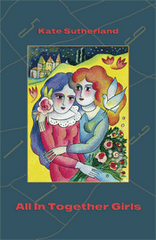All literatures have three beginnings. A literature’s first beginning is the moment of its emergence, often in quasi- or extra-literary forms: oral celebrations of gods and heroes, chronicles of distant legend or current crop conditions, narratives of exploration and travel (or captivity and slavery), and so on. Its second beginning is marked by its writers’ self-conscious recognition of themselves as writers (rather than, say, explorers who write), and of their membership in or connection to a community of others who share that recognition. Much more so than the first, this second beginning depends upon the existence of those who will produce, distribute, and consume the literature — conventionally, the publisher, the bookseller, and the reader, though it hasn’t always been so, and occasionally modern communities of writers have found substitutes for one or more of these functions. Because of its dependence upon a market, a literature’s second beginning is most clearly announced by the professionalization of its writers, by the moment at which they begin to earn their living from, or mostly from, their writing. Finally, a literature undergoes its third beginning when it receives critical or institutional recognition as a literature, that is, as a discrete body of writing, with its own history and its own set of works and characteristics. In its actual life any literature is far too internally disparate and too interwoven with other literatures to admit such definition. When we say ‘a literature,’ what we really mean is an object that exists only in perception, an object whose birth was simultaneous with its recognition and that survives only in restatements of that recognition…
From Nick Mount, When Canadian Literature Moved to New York (2005).

1 comment:
I'm sure there are some who would say that the third beginning is the only one which is important.
Post a Comment